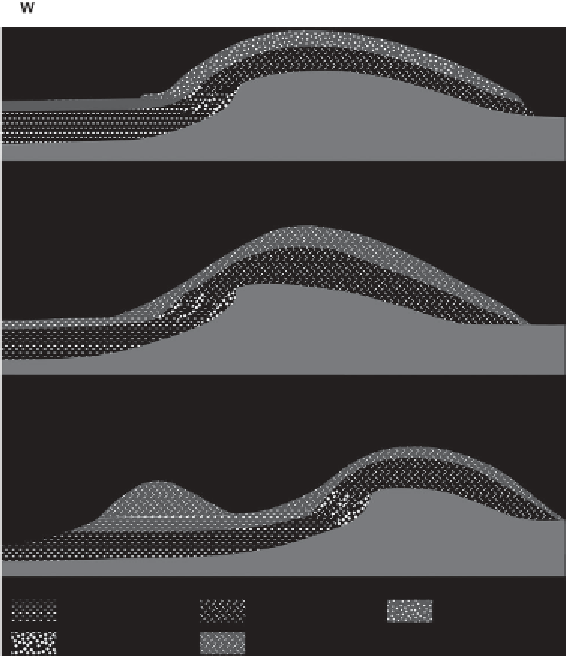Geoscience Reference
In-Depth Information
Figure 8.7. Model of a lunette formation as a lake dries out. (After Bowler
et al.,
2011
.)
The luminescence dating method indicates the last time when the sand grains were
exposed to daylight and the 'luminescence clock' was reset to zero, as discussed
in
Chapter 6
. Because most dune sands are devoid of organic remains, radiocarbon
dating is not an option. In the case of deep playa lake sequences where dunes over-
lie playa clays, it is sometimes possible to use a combination of paleomagnetic and
luminescence dating to determine long-term hydrological changes and the onset of
desert dune formation (Chen,
1989
;Chenetal.,
1990
; Chen and Barton,
1991
;Chen
et al.,
1995
).
Considerable caution is advisable when interpreting TL and OSL ages obtained on
dunes. Depending on the sampling interval selected, one can be misled into believ-
ing there have been discrete phases of dune building (Stokes et al.,
1997
), when
a closer sampling interval may denote almost continuous accretion. Furthermore,






























